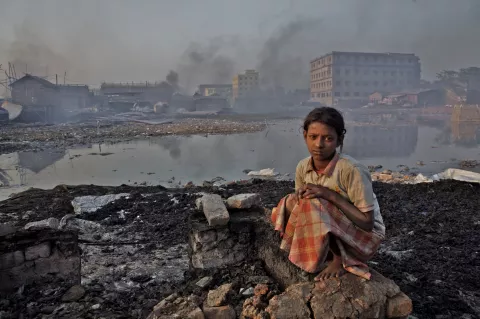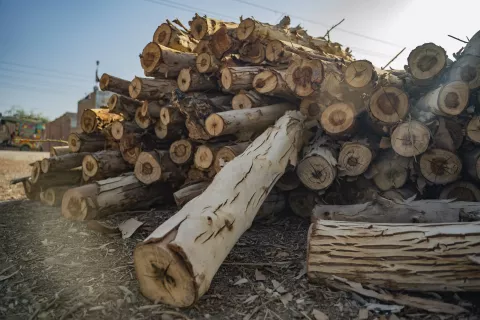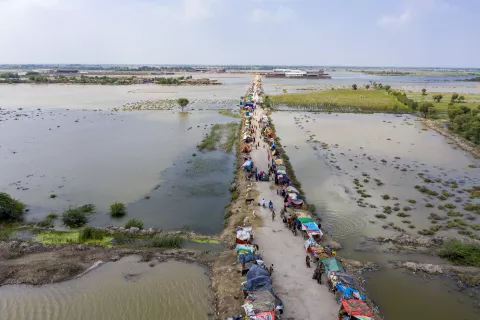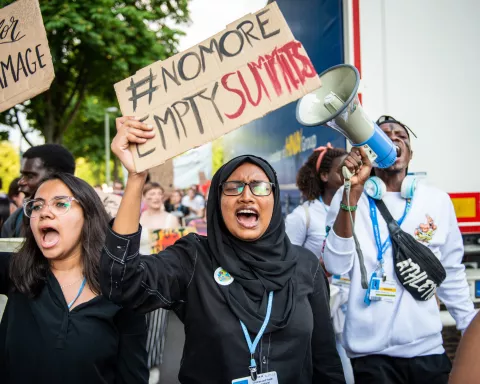The Maldives, a paradise nation of over a thousand coral islands nestled in the heart of the Indian Ocean, is my birthplace and my sanctuary.
I grew up to the rhythmic sound of the Indian Ocean's waves arriving on my island's shores. Even after 26 years, this nostalgic sound soothes me.
Pristine beaches, vibrant coral reefs, and crystal-clear waters were the backdrop of my childhood adventures.
This mighty ocean has always been our lifeblood, our playground, and the source of our sustenance for generations.
Unfortunately, Maldives is also the lowest lying country in the world. We sit perilously close to the ocean's surface. Our 1,200 islands are an average of just 1.5 metres above it. Some are even lower. This geographic disadvantage has put us on the frontlines of the climate crisis — and we’re living through the chilling consequences right now.
Every year, as the planet warms and sea levels rise, the waves are edging ever closer, seizing our land.
My island home is sinking.
The ocean, which once symbolised an endless source of beauty and abundance to my people, is now threatening our very existence.
The country I call home could disappear completely by the end of this century — swallowed by the rising seas.
It’s terrifying. A stark and distressing reality that keeps us young people awake at night.
But at the same time, we have little time to dwell on the future when water is causing havoc in our daily lives right now. Because we may be surrounded by water and being swallowed by water, but we’re also running out of freshwater that we can use.
We’ve always relied on rainwater and a limited number of underground aquifers for freshwater. Aquifers are bodies of rock or sediment that hold water in the ground. Water wells are the primary source of freshwater for all island inhabitants. Periodic rainfall helped replenish the water we consumed from these aquifers.
Hardly a decade ago we were using this water to shower, cook, and water our plants. But as weather patterns have become more unpredictable, irregular rainfall and droughts have depleted these sources and rising sea-levels caused saltwater to seep into them — making groundwater unfit for cooking, watering plants or growing food.
Food production has been severely hit too. Our traditional style of farming is completely reliant on the monsoons to plant crops. Now, these erratic and violent monsoons are destroying what we plant or causing them to die of thirst.
Marine life that we’ve relied on for basic nutrition for generations is equally affected. Our oceans are warming up which is bleaching our coral and killing fish's habitats. As a marine biologist, I see this heartbreak firsthand every day. The fish we caught a decade ago were over a foot long. Today they are half the size — and they’ve been overexploited, so there are less of them. Our food and income sources have both been hit.
Almost everything we eat is now imported, even the most basic food staples.
Many of these pre-packaged food items are low in nutrients and harmful to our health. We’ve also had to rely more on expensive bottled water which is making plastic pollution even worse.

Malnutrition stands as just one of the cascading consequences of climate change impacting children. The climate crisis extends beyond reshaping the planet; it's actively reshaping the lives of children. Beyond endangering their homes, food sources, overall well-being, and developmental growth, it also poses a threat to the very institutions crucial to their health and education.
Water scarcity disproportionately impacts families struggling to make ends meet. They now not only have to spend more money on purchasing water, but to conserve water can avoid behaviours like handwashing, which exposes them to diseases like diarrhoea and COVID-19.
The Maldives may serve as a poignant visual reminder of the urgent need for action, but we’re not alone in facing such dire consequences.
Every child in South Asia is affected by at least one climate-related hazard, shock or stress. And over half of the children who live here are already suffering from water scarcity. A staggering 347 million children. The highest number in the world.
Climate change and water scarcity are not isolated problems limited to small island nations. They are global challenges that require global solutions, now.
Adapting to the impacts that we’re living through now has become Maldivians biggest concern. We’re trying all sorts of techniques to protect against flooding and erosion — like sandbags, beach groins, artificial reefs and coral planting — and experimenting with innovative solutions to conserve our precious freshwater resources.

These may work for now. But they’ll be futile if sea levels continue to rise.
Our government is desperately striving to raise awareness about the urgent need to reduce the carbon emissions driven largely by human activities — like burning fossil fuels and deforestation — that warm our world and cause climate change. And Maldives has set ambitious targets for renewable energy adoption.
But we can only do so much.
As a country, our carbon footprint is one of the lowest in the world, yet we're among the most affected by climate change.
We need other countries and decision-makers to act to reduce emissions too. Right now.
And we need action and support to tackle water scarcity.

As I write this blog, I am filled with mixed emotions. Children in present day Maldives have a very different childhood to the one that I grew up in. The beach where I used to play, collect shells and watch sunsets no longer exists.
Yet I remain hopeful.
In my work as a climate activist and environmental consultant across Maldives, I’m inspired all the time by the people I meet and their commitment and desire to tackle climate change, especially young girls.
And I feel that Maldives, with its undeniable beauty and resilient people, is a microcosm reflecting the broader fight against the environmental crises threatening our world. We must remember that our planet's well-being is intricately connected, and what happens here affects us all.
Technology and solutions exist to address climate change. We just need the political commitment from all to make it happen.
I hope that world leaders can rise to the occasion to protect not just my cherished home — but the future of our planet for children today and the ones yet to come.

About the author
Naff Asim is a 26-year-old climate activist from Maldives. She’s been working as a marine biologist and environmental consultant across the country since 2016. She’s passionate about educating communities on climate change, marine conservation and the environment — and empowering them to take action.
Her work brings her face-to-face with the heartbreaking impacts of climate change every day, yet she’s determined to focus on the solutions.
She regularly collaborates with international organizations and has helped establish Marine Protected Areas in the Maldives to replenish marine biodiversity, increase food security and increase communities’ incomes.









